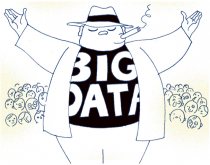 While information graphics have been around for decades, their current form is brand new (or kind of old, if you’re counting in Internet years). Just like the Web, information and data graphics will continue to evolve in line with improving technology and growing amounts of data.
While information graphics have been around for decades, their current form is brand new (or kind of old, if you’re counting in Internet years). Just like the Web, information and data graphics will continue to evolve in line with improving technology and growing amounts of data.
Sarah Slobin, of The Wall Street Journal, follows up on her previous article on successful infographics with an imagined future of what is to come in the next few decades.
Spend a lifetime in a news stream delivered in a visceral form and going in reverse is not an option. People and companies are getting wise to the value of the data stream, education is shifting to accommodate new technology and tools, and bright lines are forming between those on the side of open source versus those building high-walled gardens. When more millennials are in charge of staffing, information graphics will become commonplace. The revolution will be visualized.
Slobin continues with a decade-by-decade projection of what information graphics will be, complete with an evolving dog metaphor. It’s a future where interacting with data isn’t just for numerical nerds — a place where people don’t say they hated statistics in college as a knee-jerk reaction. Far-fetched? I’m sure people used to say the same thing about computers.


I always have a knee jerk reaction to the term “information graphics,” or “infographic.” To me, coming from information visualization, the term designates an amateur or a graphic designer making a graphic of statistical data. Usually the graphics in this case ignore most rules of visualizing data often obliterating the data for graphical extras. Honestly, the term is just not used in the field of visualizing data or scientific visualization. But both of these articles seem to be more about InfoVis than what I usually think of when the term “infographic” is used.